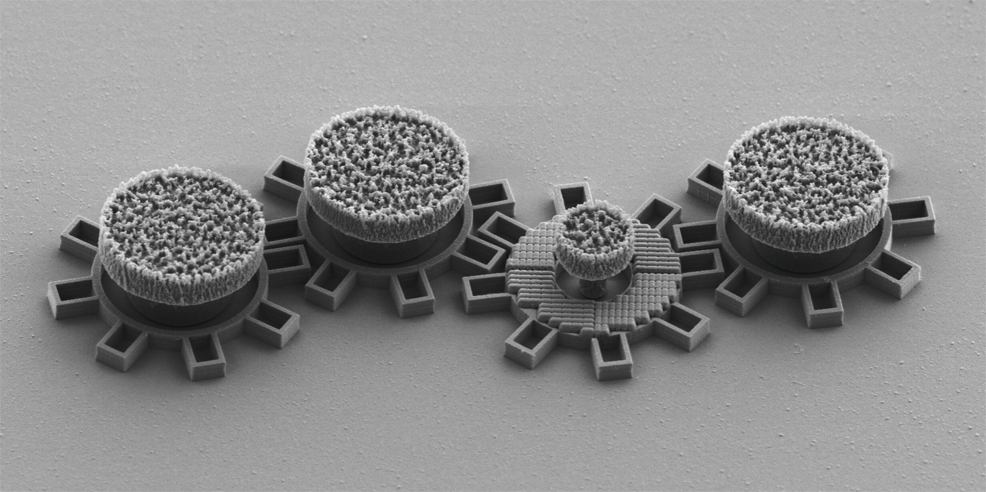
18th September 2025 Scientists build motors narrower than a human hair Researchers in Sweden have built laser-driven gears just 16 micrometres wide – about a tenth the width of a human hair – paving the way for medical tools that operate at the scale of individual cells.
Researchers at the University of Gothenburg in Sweden have developed the smallest on-chip motors ever created – light-powered gears on a micrometre scale. These micromotors could one day work alongside living cells. Gears are everywhere, from clocks and cars to robots and wind turbines. For more than three decades, scientists have tried to shrink them ever further to construct micro-engines. Yet until now, efforts stalled at around 0.1 millimetres, because mechanical drive trains could not be made any smaller. The Gothenburg team has now overcome this size barrier by discarding traditional mechanics and instead using laser light to drive the gears directly. Their study shows that optical metamaterials – tiny, patterned structures able to capture and control light – can spin gears just 16 micrometres wide. That is one-sixth the size of previous attempts, and makes them smaller than many human cells. Using lithography, the researchers fabricated gears with metamaterials in silicon directly on a microchip. When struck by a laser, the gears rotate. The light's intensity controls the speed, while its polarisation determines the direction.
Credit: University of Gothenburg
"We have built a gear train in which a light-driven gear sets the entire chain in motion," explains Gan Wang, first author and a researcher in soft matter physics. "The gears can also convert rotation into linear motion, perform periodic movements and control microscopic mirrors to deflect light." The ability to integrate such machines directly onto a chip and drive them with light opens up entirely new possibilities, according to the team. Since laser light does not require any fixed contact with the machine and is easy to control, the micromotor can be scaled up to complex microsystems. "This is a fundamentally new way of thinking about mechanics on a microscale. By replacing bulky couplings with light, we can finally overcome the size barrier," adds Wang. With advances such as this, researchers are beginning to imagine light-sensitive micro- and nanomachines that can manipulate small particles, or be integrated into future lab-on-a-chip systems. Medicine is a particularly promising field. With gears as small as human cells, micromotors could pump fluids, regulate flows inside the body, or function as tiny valves that open and close on demand. This breakthrough brings science a step closer to machines that operate seamlessly at cellular scales, with potential to transform diagnostics, treatment and biomedical research.
Comments »
If you enjoyed this article, please consider sharing it:
|
||||||







